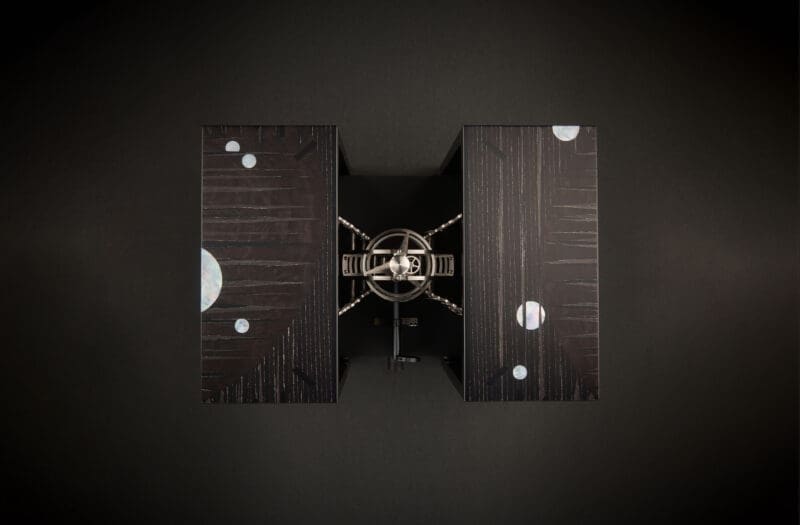In a profound exploration of time’s elusive nature, multidisciplinary artist Fiona Krüger and master watchmaker Denis Flageollet of De Bethune have unveiled Mystery Box: Forget Time—a sculptural timepiece that redefines the boundaries between horology and philosophical inquiry.
Inspired by the writings of theoretical physicist Carlo Rovelli, who postulates that time is not linear, nor even truly existent in the way we perceive it, Forget Time invites collectors and connoisseurs into an abstract meditation on temporality. “Time flows at a different speed depending on the place… and even the notion of the present vanishes,” Rovelli writes—a concept that Krüger interprets into a visual and mechanical language that is both poetic and disorienting.
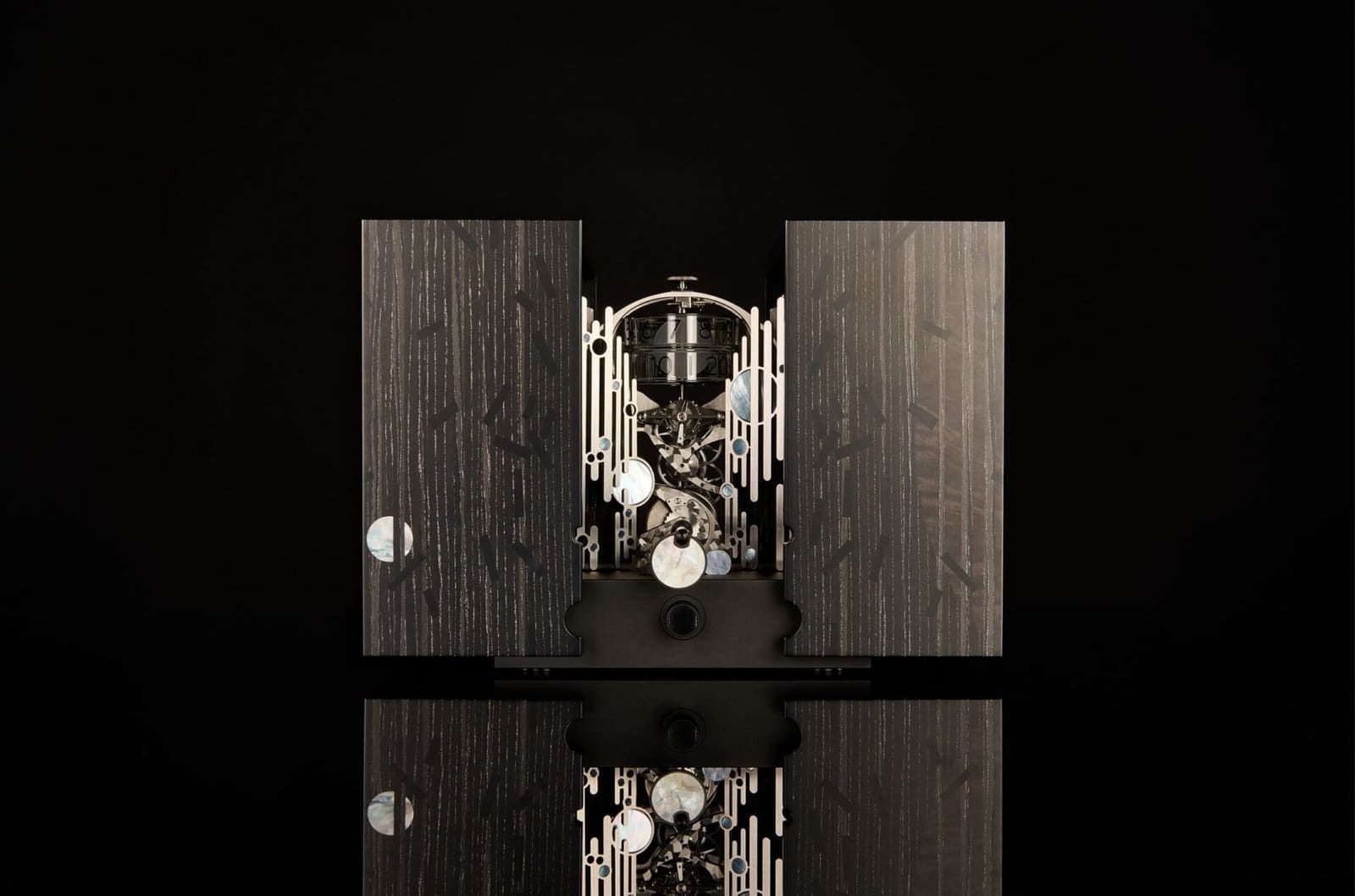
From the outside, Mystery Box: Forget Time is a mesmerizing display of black marquetry lines and mother-of-pearl inlays, crafted in collaboration with Hawthorne Fine Boxes. Artisan Emeline Dépail’s intricate woodwork evokes drifting photons, their motion frozen mid-journey. Fragmented patterns spiral from a central point, suggesting both expansion and dissolution—time simultaneously gathering and slipping away.
Within, the marvel continues. With the turn of a suspended key and the press of a concealed button, the piece unveils its internal clock: a ghostly system of floating glass indices, measuring hours and minutes with haunting delicacy. The mechanism, imagined by Flageollet and brought to life by De Bethune’s artisans in L’Auberson, seems to breathe—its movement a dance of philosophy, memory, and machine.

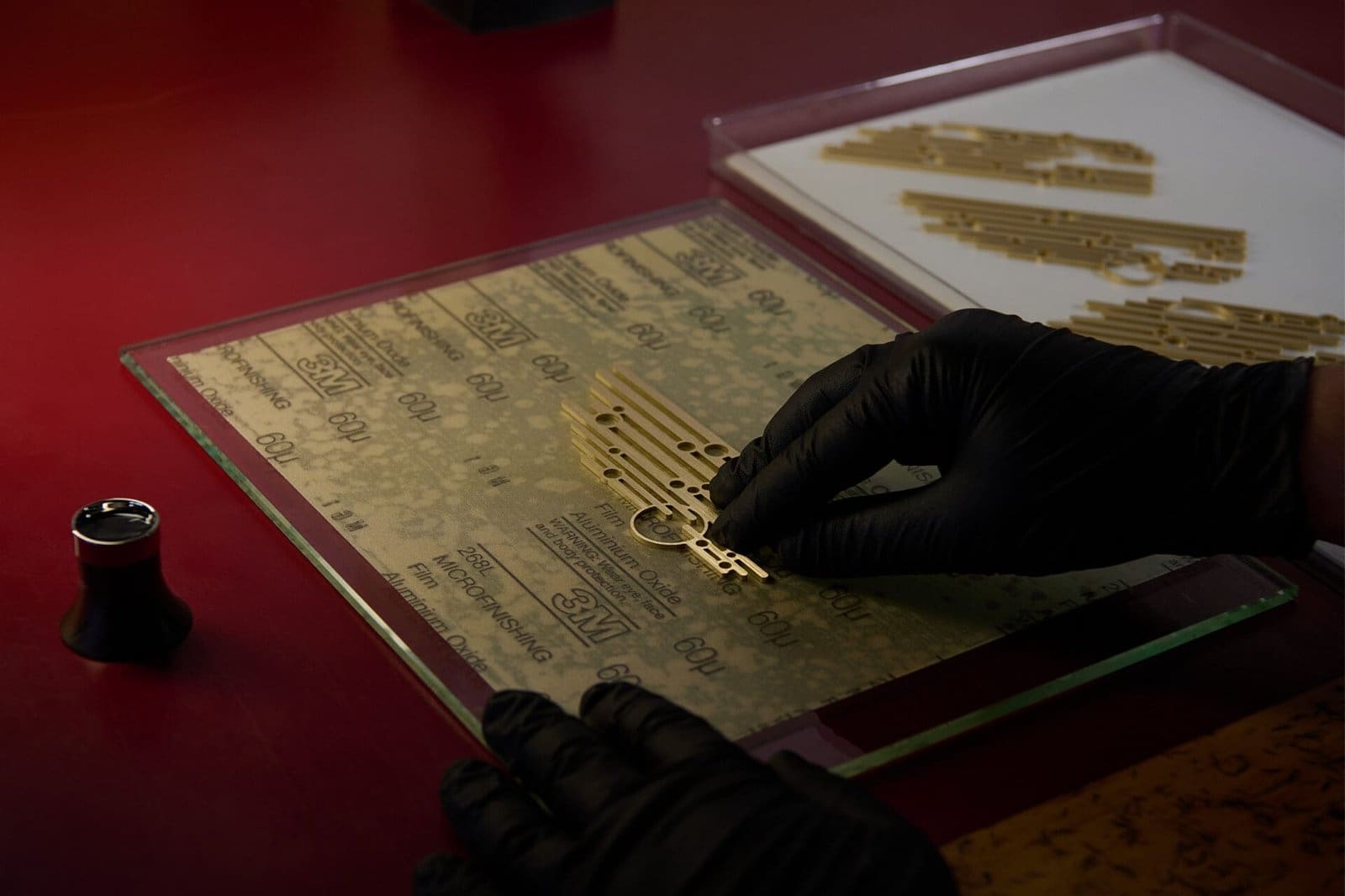
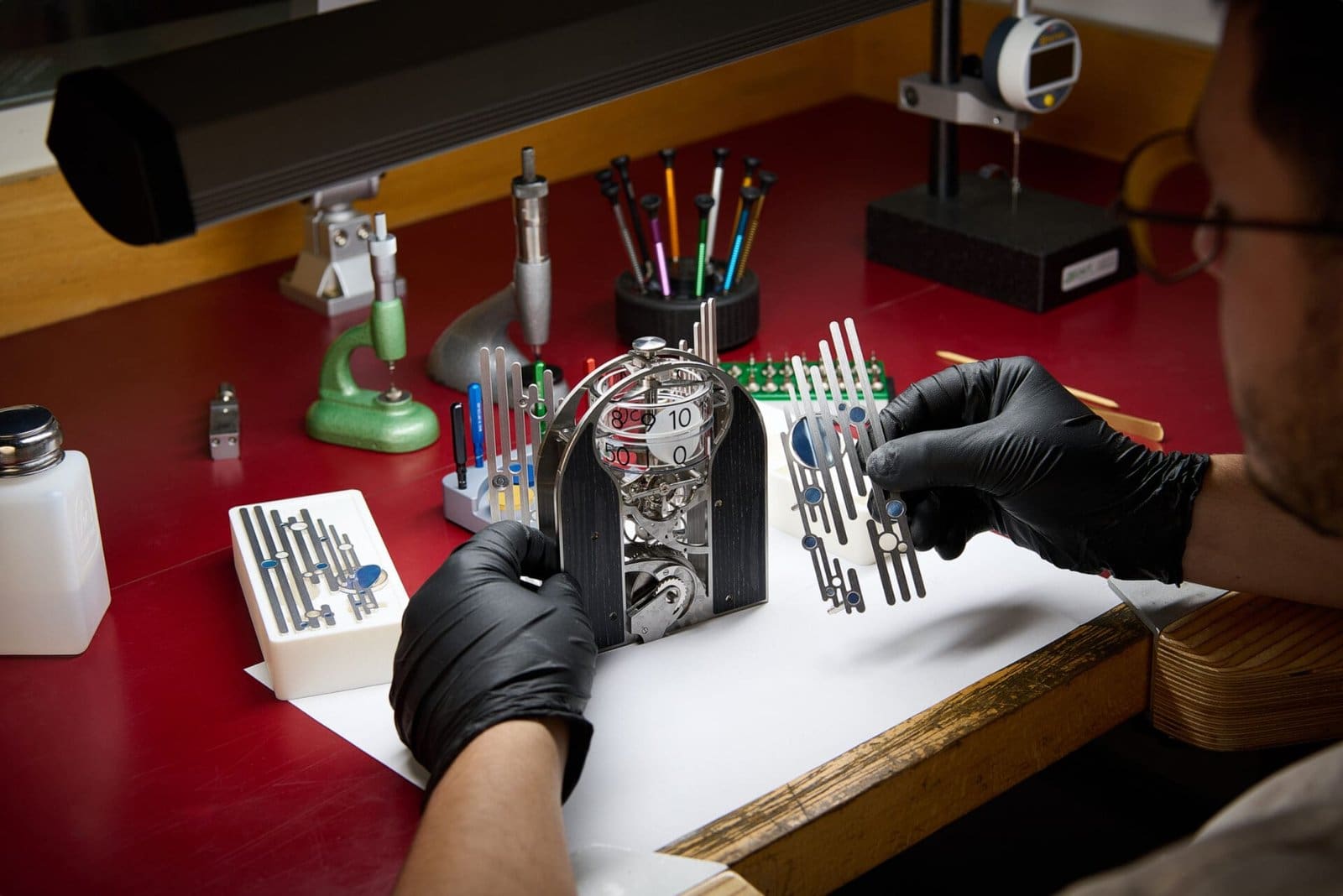
“Mystery Box: Forget Time is more than a clock. It’s a question, an invitation to reflect on our relationship with time and existence,” says Krüger. “It captures time’s impermanence in tangible form.” Her design sensibility—conceptual, symbolic, and highly personal—merges seamlessly with Flageollet’s deep technical knowledge and emotional connection to mechanical art.
This piece continues Flageollet’s long-standing passion for horological objects that go beyond wristwatches. “Clocks offer a much vaster space,” he explains, “They allow for a freedom of expression—both mechanical and artistic—that’s harder to achieve on the wrist.” Flageollet’s past work includes the celebrated Stellar Clock, and Forget Time builds upon this legacy of pushing horology into the realm of high art.
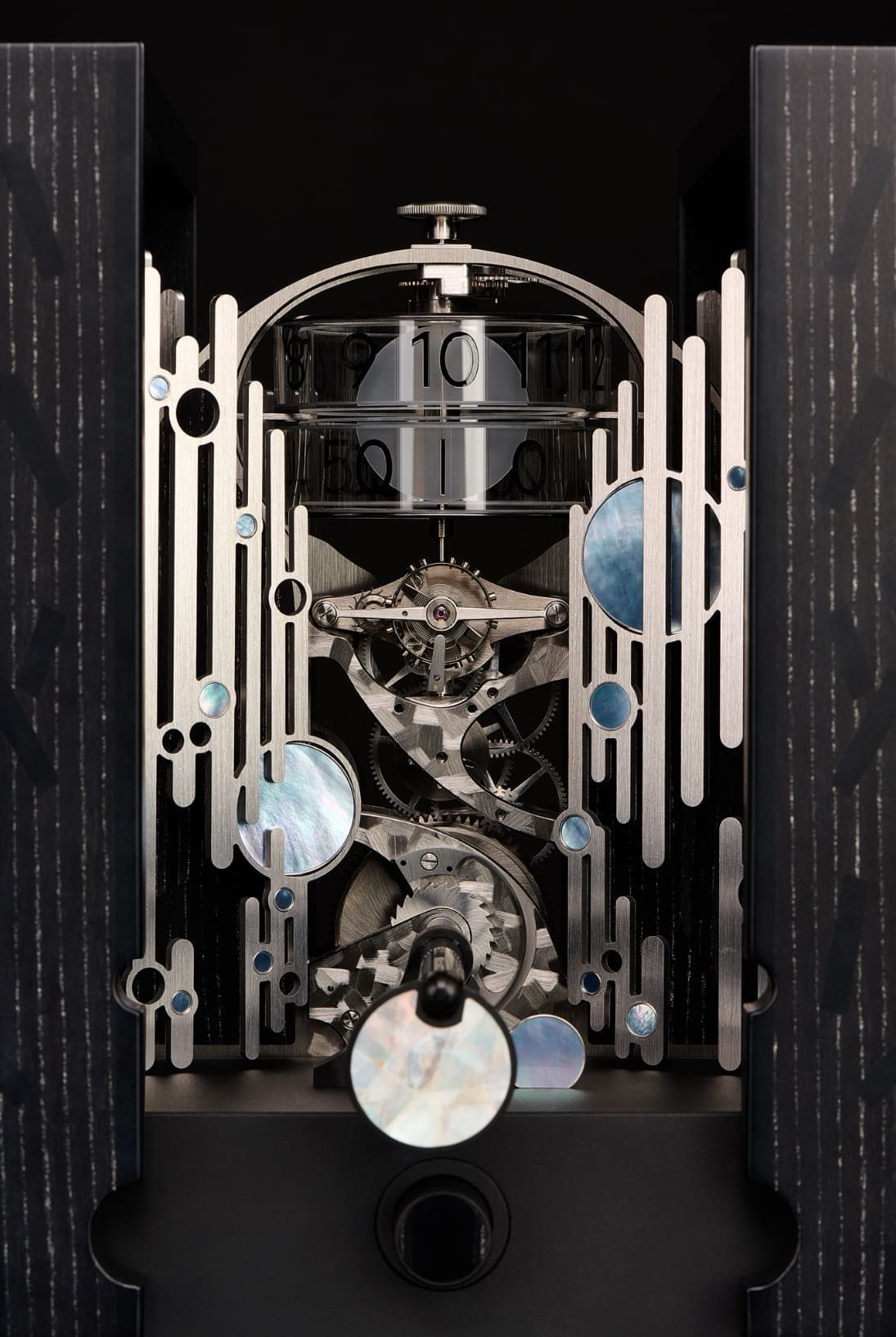
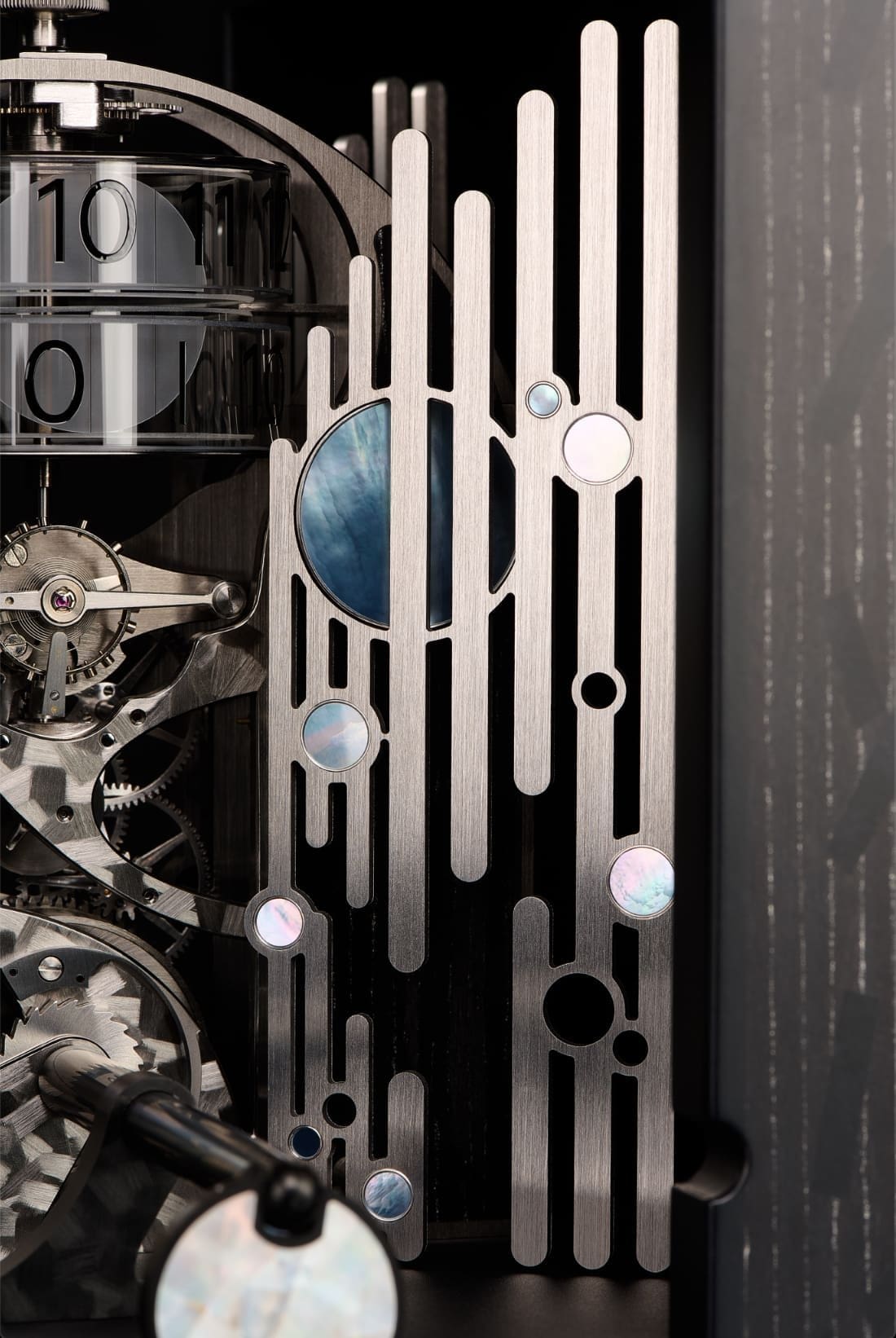
With only 20 pieces available worldwide, Mystery Box: Forget Time is not merely a collector’s item; it is a metaphysical artefact. A synthesis of material mastery, philosophical depth, and the ineffable beauty of lost seconds, it occupies a place where art and time dissolve into experience.
At the heart of Forget Time is a silent tension between stillness and motion. The oscillating discs of mother-of-pearl, layered like shifting tectonic plates, act as visual metaphors for the passage of time—not in hours and minutes, but in moments and memories. This artistic mechanism doesn’t just tell time; it reflects on the impossibility of grasping it. In this way, the object resists the traditional function of a clock, transforming instead into an emotional compass, pointing not to the now, but to the infinite.
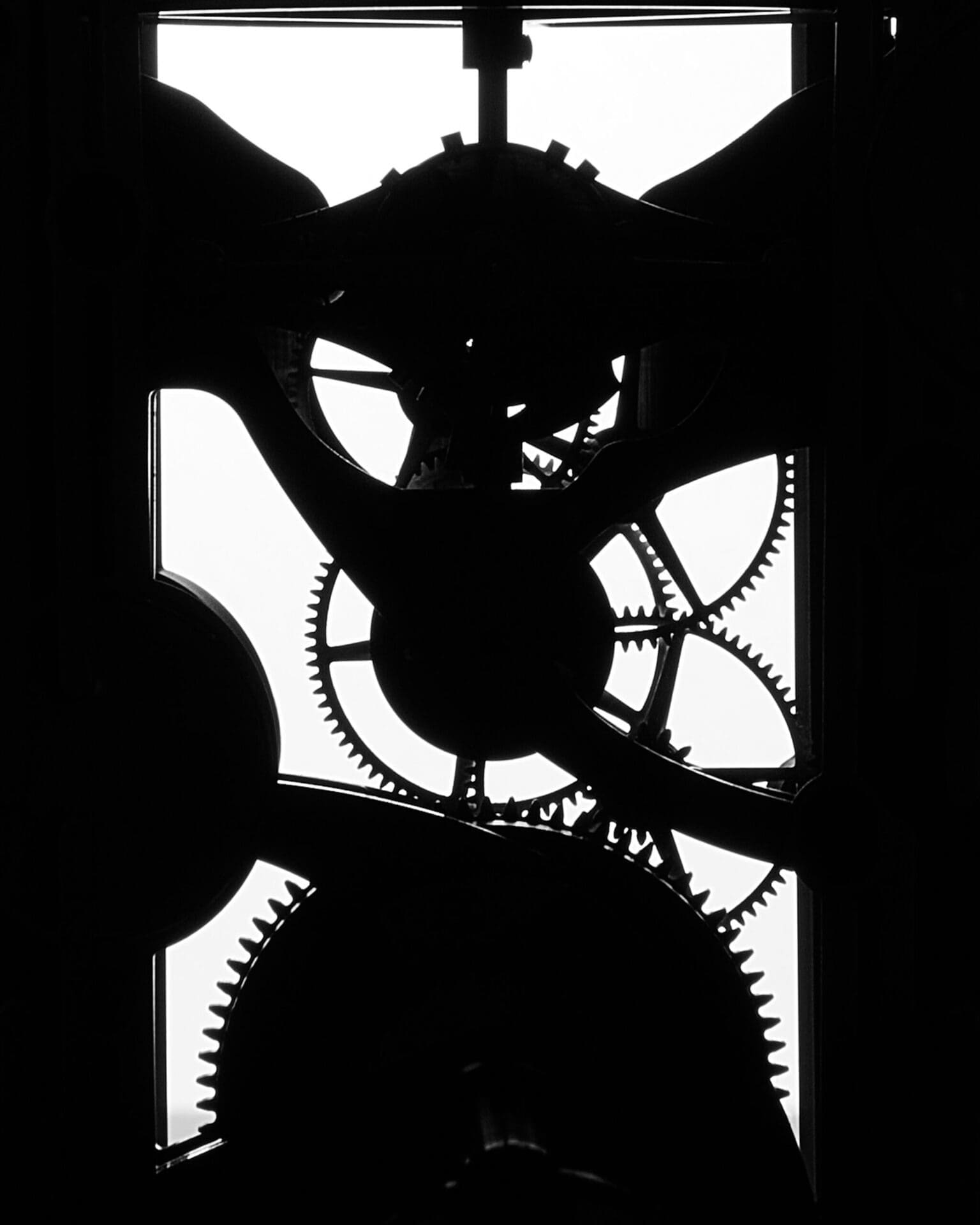
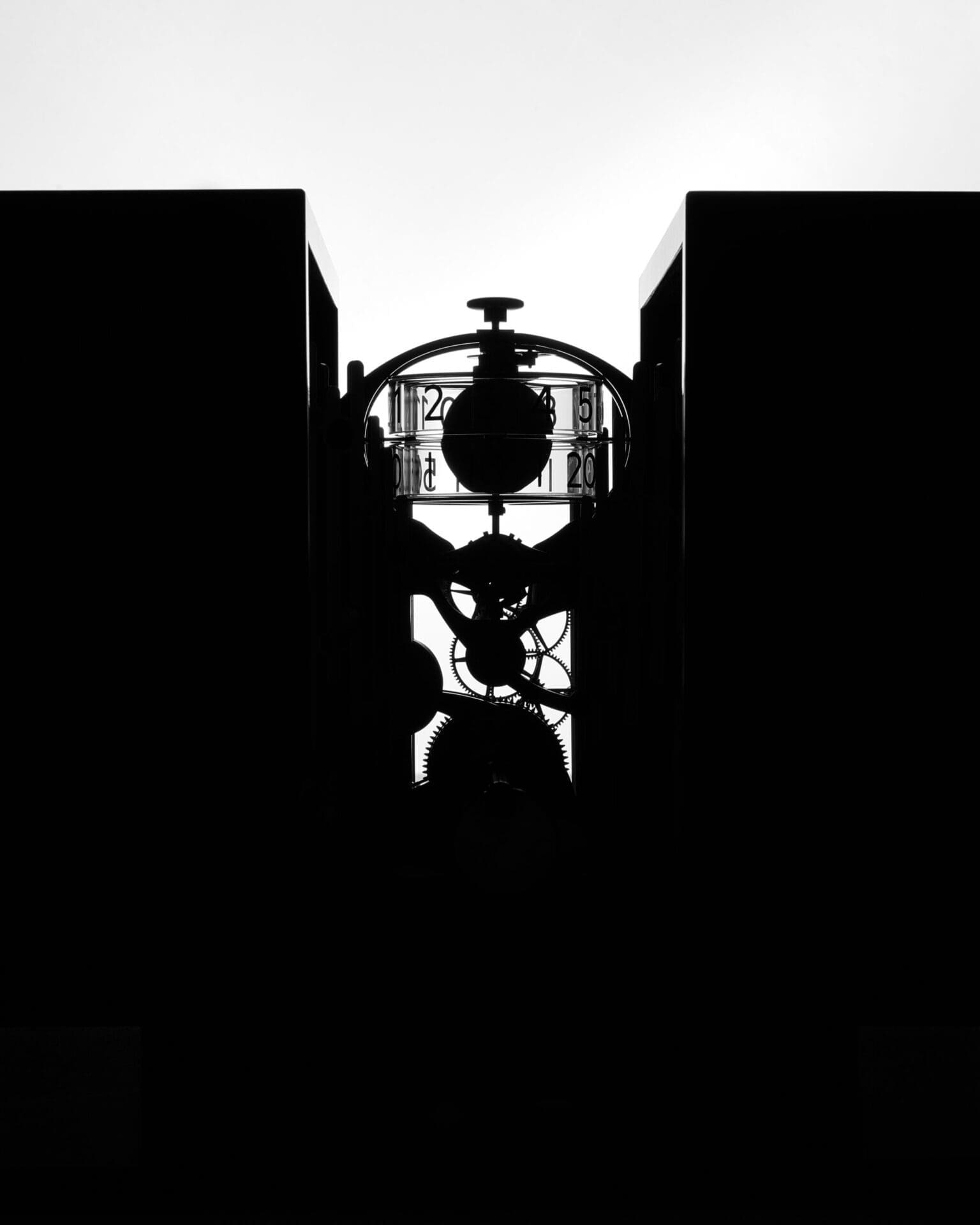
Every element of this creation was considered through the lens of storytelling. From Krüger’s conceptual sketches to Flageollet’s precision-engineered escapement, Forget Time is the result of years of conversation between artist and watchmaker—an interdisciplinary exchange that blurs the lines between philosophical thought, visual art, and horological engineering. This dialogue is evident in the seamless harmony of exterior and interior, texture and technique.
Material choices elevate the object beyond timekeeping. The inlaid mother-of-pearl refracts light differently with each movement, echoing the idea that time is relative depending on the observer’s position. The rich, dark marquetry suggests the vastness of space, while the suspended key—deliberately unhidden yet passive—serves as both an invitation and a reminder: time is waiting, but it must be consciously activated.
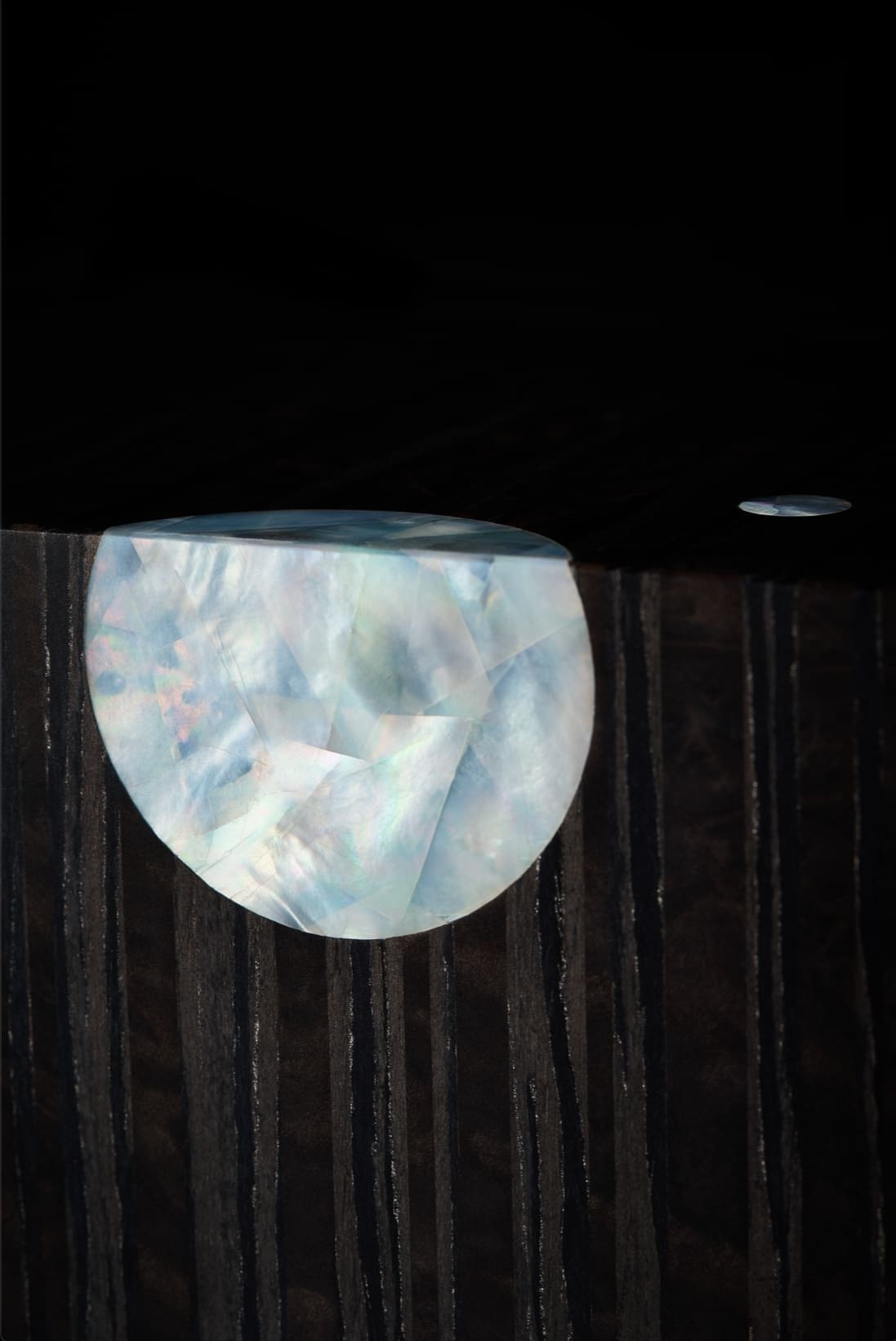

This piece is also a testament to the slow art of craftsmanship. While the luxury world often leans into the instantaneous—fast launches, fleeting trends—Forget Time proposes a counterpoint: time should be touched, listened to, and contemplated. In that sense, it recalls a Renaissance-era curiosity cabinet, where each detail provokes reflection and demands presence. For collectors, it is not simply an acquisition—it is a meditative ritual.
Ultimately, Mystery Box: Forget Time becomes a poetic rebellion against the tyranny of linearity. It invites us to move beyond the ticking of seconds and to surrender to a more intuitive understanding of time—one that aligns with rhythm, space, memory, and feeling. As a creation, it is rare. As an experience, it is timeless. Fiona Krüger and Denis Flageollet have not just collaborated on a horological object; they’ve created a portal through which time itself becomes art.

